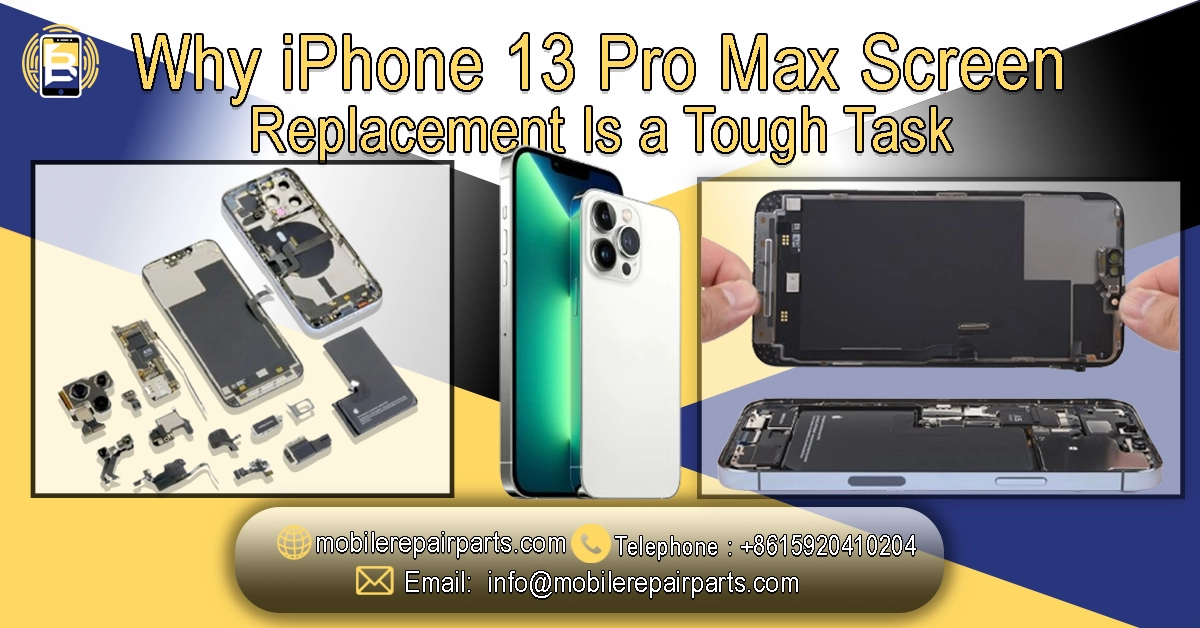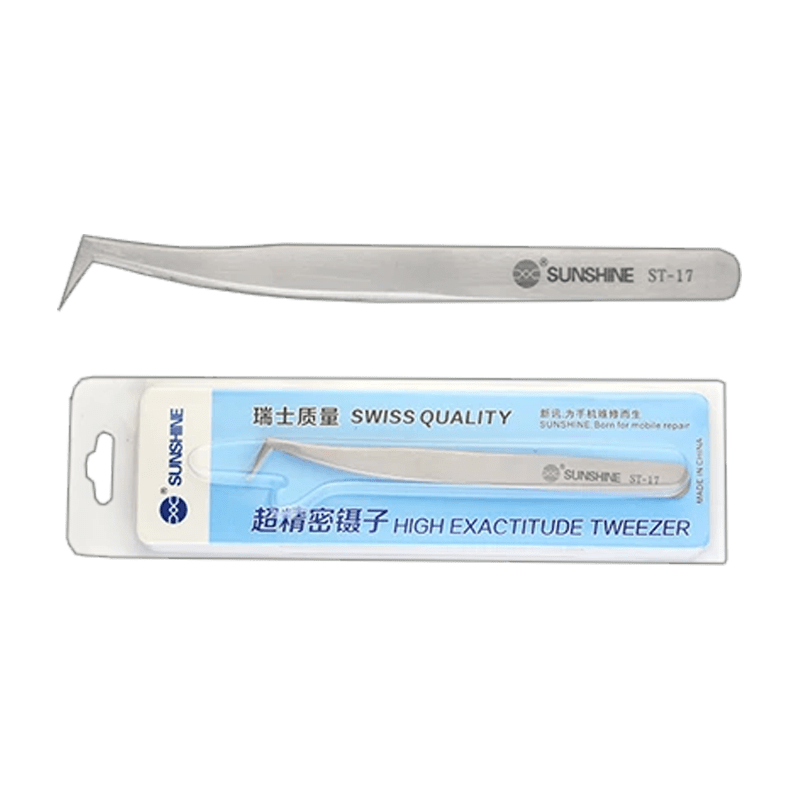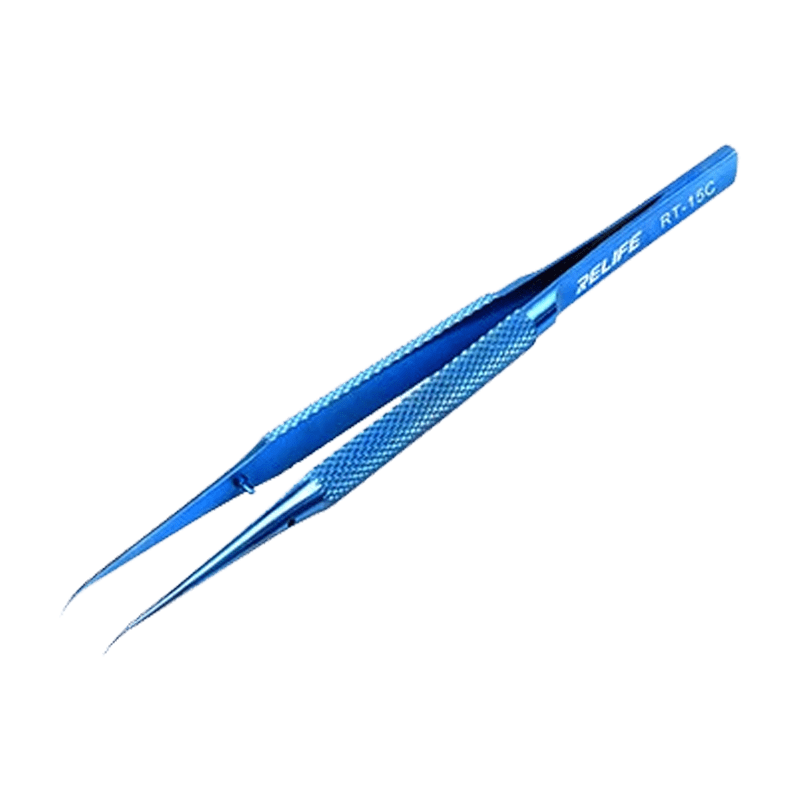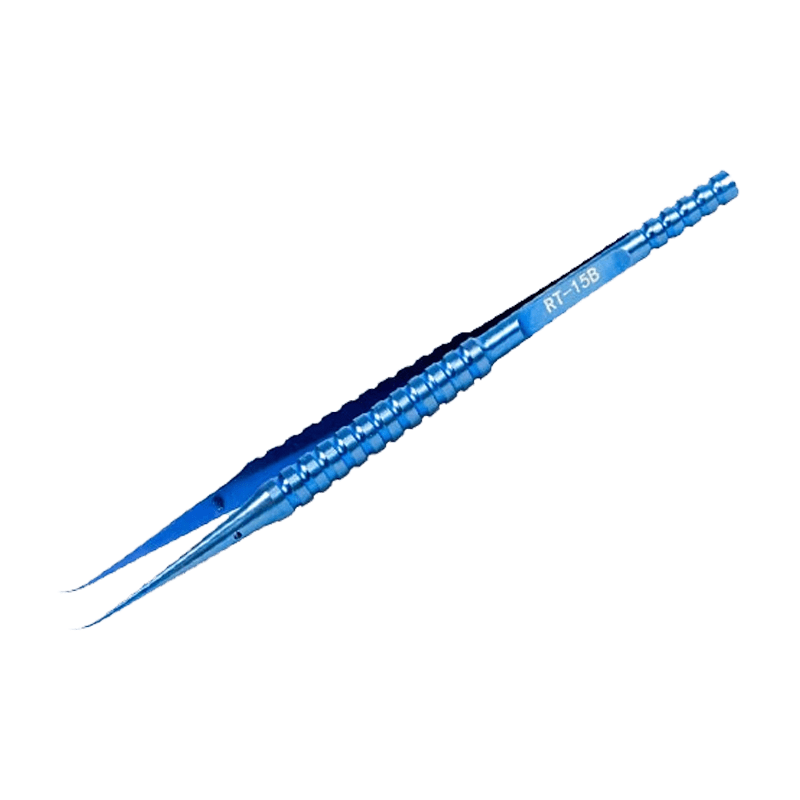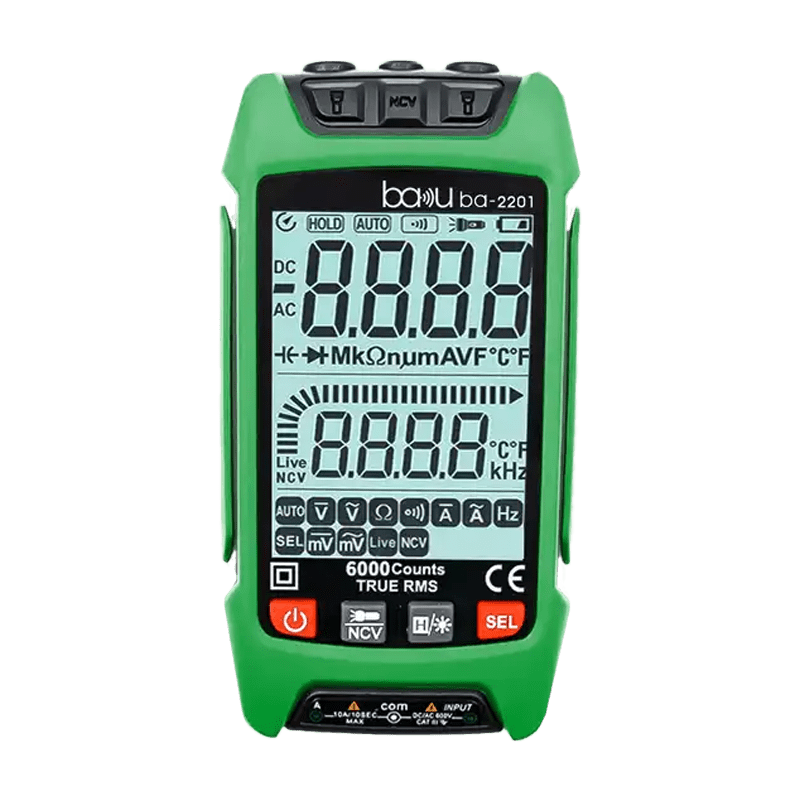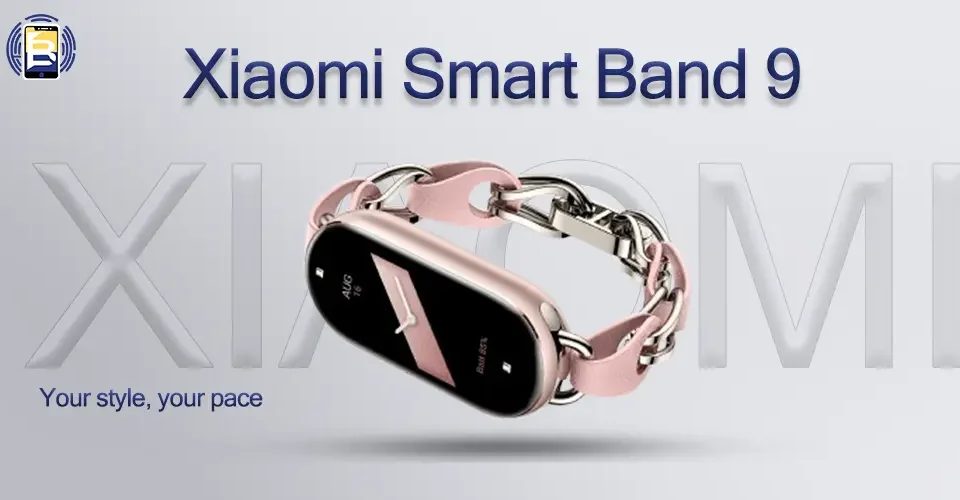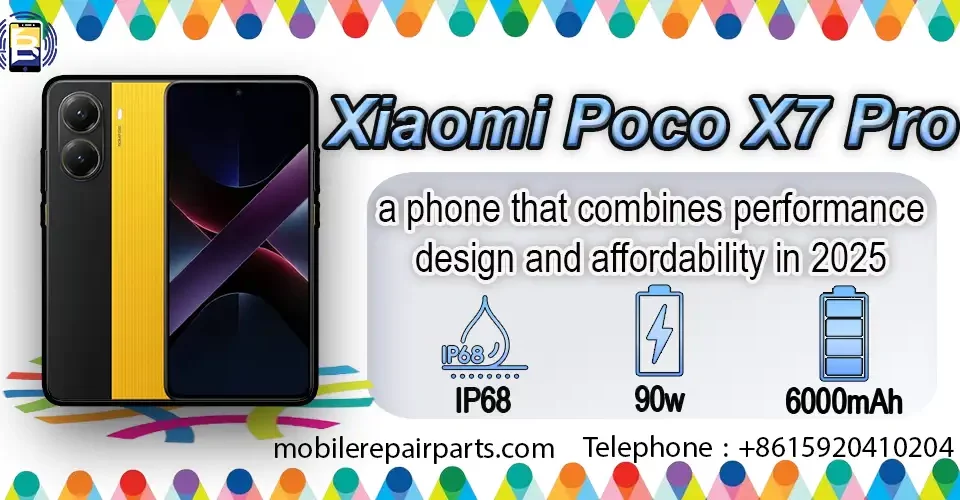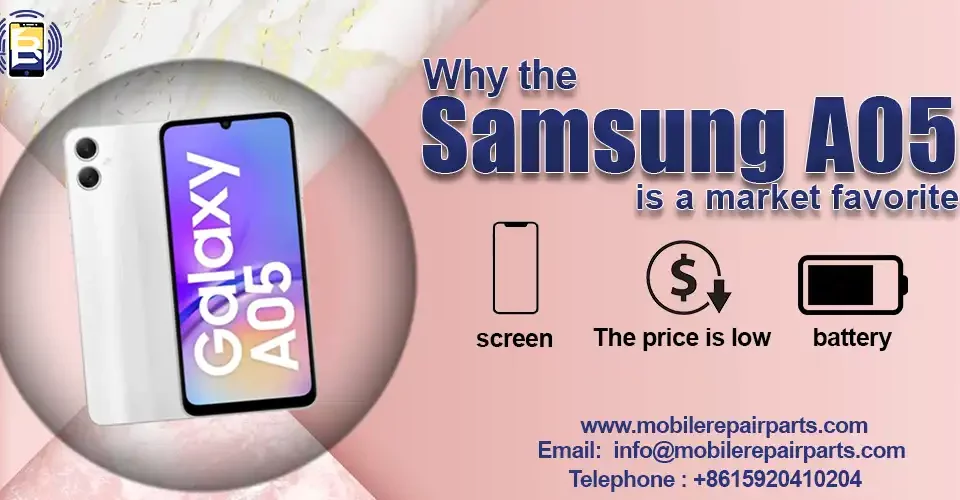When Apple launched the iPhone 13 Pro Max, it didn't just optimize performance and cameras, it fundamentally changed the way technicians and wholesalers approached iPhone 13 Pro Max screen replacement.
Unlike previous versions, this phone was built on a deeper integration of hardware and software, making screen replacement a highly precise process that has a direct impact on the reputation of the maintenance and distribution business.
In this article, we'll detail why iPhone 13 Pro max screen replacement is more complicated than it sounds, the hidden risks when using low-quality parts, and what every wholesaler and technician should know to preserve their business reputation and profits.
Understanding the iPhone 13 Pro Max screen replacement process
When considering a screen replacement, it's essential to understand what's at stake.
Screen replacement isn't just about replacing a broken piece of glass; it integrates with several key functions, such as the touch interface, Face ID recognition, and True Tone technology.
The iPhone 13 Pro Max screen may look similar to the iPhone 12 screen on the outside - it's flat, OLED, and held in place with a similar adhesive - but behind that simple design lie radical changes:
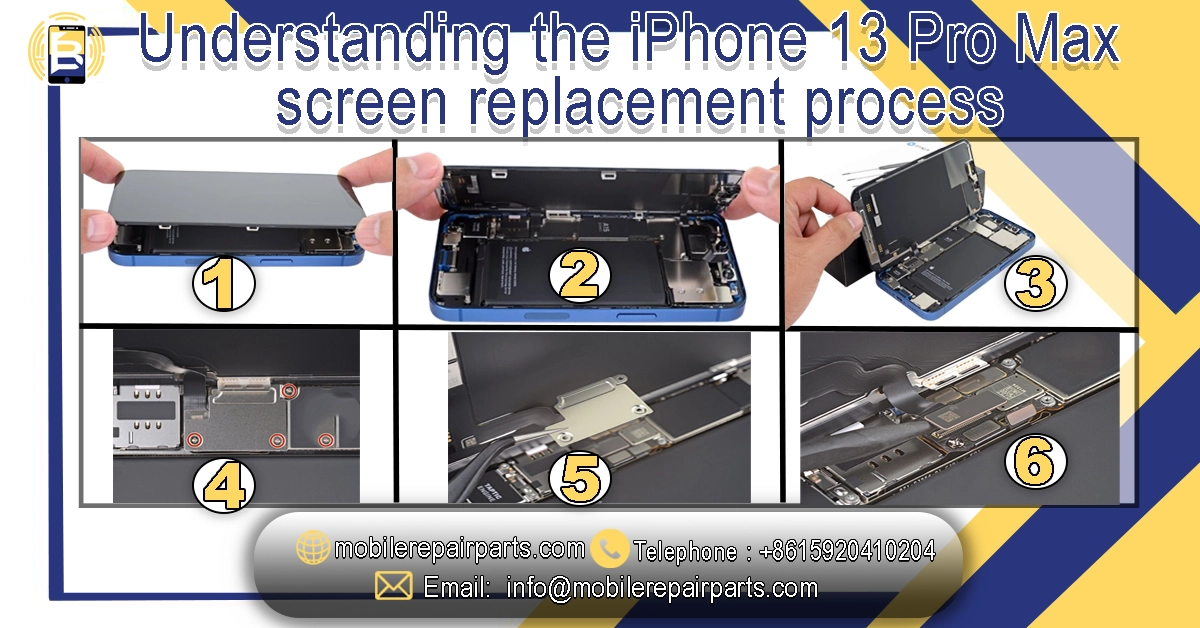
1-Tighter connection between screen and motherboard
Apple has introduced an advanced coding system, where each screen is associated with a special serial number. When you replace the screen without properly transferring or programming this coding, the following results occur:
- Permanent warning message: “Important screen message”.
- Loss of True Tone.
- Poor touch response or color issues.
2- Face ID sensitivity
Face ID relies on the TrueDepth sensor that is partially mounted on the screen.
Any damage or inaccuracies in the transfer of this sensor during replacement results in:
- Face ID is permanently disabled
- Cannot be recovered without consulting an Apple Authorized Center.
3-Impact on brightness control
The iPhone 13 Pro Max's brightness and color temperature are calibrated to the original display. When an unprogrammed replacement screen is installed:
- Colors may appear washed out or too blue.
- Automatic screen brightness malfunction.
- Slow reaction to ambient light.
What does iPhone 13 pro max screen replacement involve?
Replacing the screen on an iPhone 13 Pro Max isn’t as straightforward as it may seem. It requires carefully removing the glass front, handling the touchscreen (digitizer), and ensuring the screen is compatible with the phone's internal components. These steps require precision and expertise. Considering the high cost of this phone and iPhones in general, careful attention to detail can save you from additional expenses caused by incorrect repairs.
Why is the iPhone 13 Pro Max screen so much harder to replace?
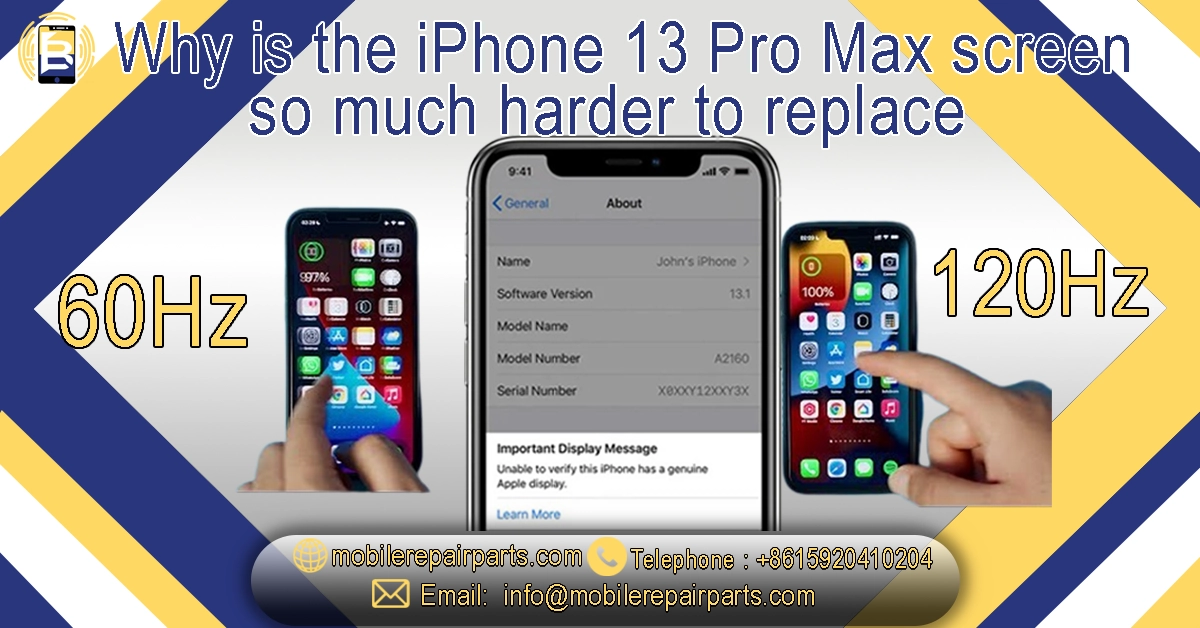
Replacing this screen is harder because it uses advanced ProMotion technology (up to 120Hz), has Face ID parts built into the display that must be moved carefully, and requires transferring serial numbers and calibration data to avoid errors or losing features:
1- Advanced Screen Technology (ProMotion 120Hz)
Unlike older versions of the iPhone that used screens with a fixed 60Hz refresh rate, the iPhone 13 Pro Max offers a screen that supports ProMotion, a technology that enables the phone to automatically adjust the refresh rate from 10Hz to 120Hz as needed.
This dynamic refresh means:
- Replacement screens must be fully compatible with ProMotion or they will only work at 60Hz.
- Some commercial Aftermarket displays don't support 120Hz at all, causing a less smooth user experience that is easily noticed by customers.
- In older versions such as the iPhone 8 Plus, this issue did not exist.
2- Link iPhone 13 Pro Max screen to Face ID modules
The iPhone 13 Pro Max display has a built-in Face ID sensor matrix:
- Infrared camera.
- Raster viewer.
- Flood illuminator.
If you don't move these native parts very carefully, it will permanently disable Face ID.
In older versions, such as the iPhone X or iPhone XS, moving these parts was relatively less complicated.
The relationship between screen, Face ID and True Tone activation
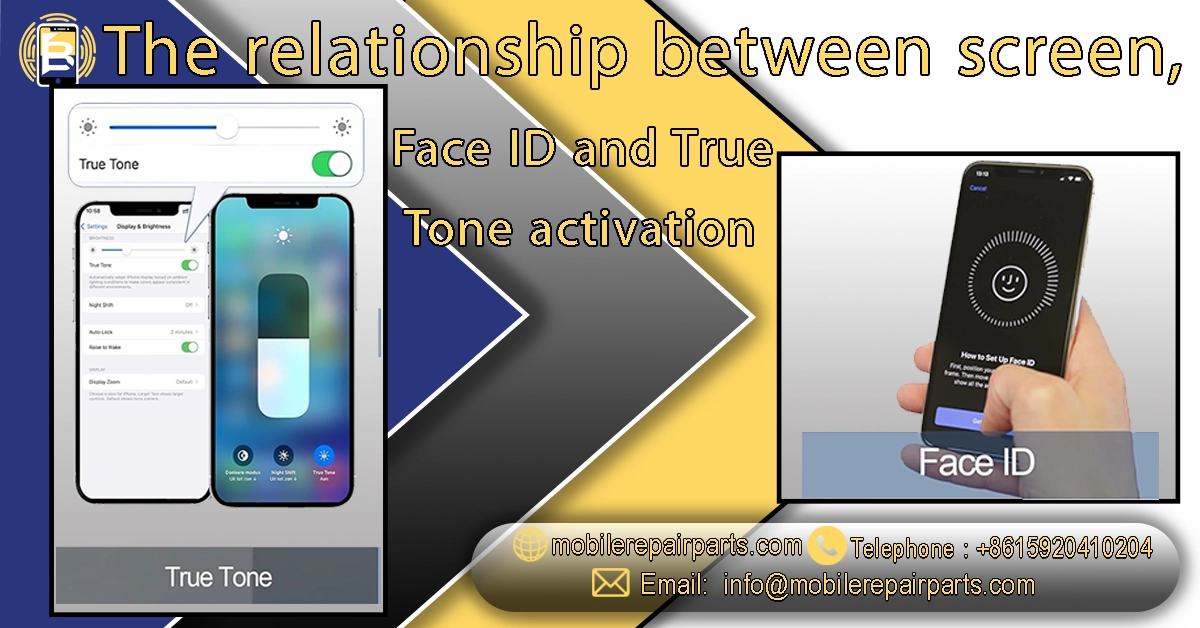
If you ask any professional repair shop owner: “What is the most important thing customers care about after a screen change?” the answer will likely be:
Does Face ID still work?
and does the screen look the same as before?
Unfortunately, both of these features are easily lost when there is a lack of skill or the use of non-professional tools.
-Calibrate True Tone:
True Tone is used to align the white balance with the ambient light.
For this feature to remain active after a screen replacement, the technician must extract the EEPROM data from the original screen and rewrite it into the new screen using specialized software tools.
If this is not done:
True Tone is permanently lost.
The color appears bluish or yellowish.
The customer easily notices the difference and may think the screen is a counterfeit.
-Face ID sensitivity when replacing:
Face ID components are very sensitive to heat and pressure:
Just applying excessive heat while removing the screen may cause Face ID to fail.
Any damage to the micro cable means the loss of an important function that can only be restored by replacing the entire motherboard.
Why using non-genuine screens may lead to loss of vital functions?
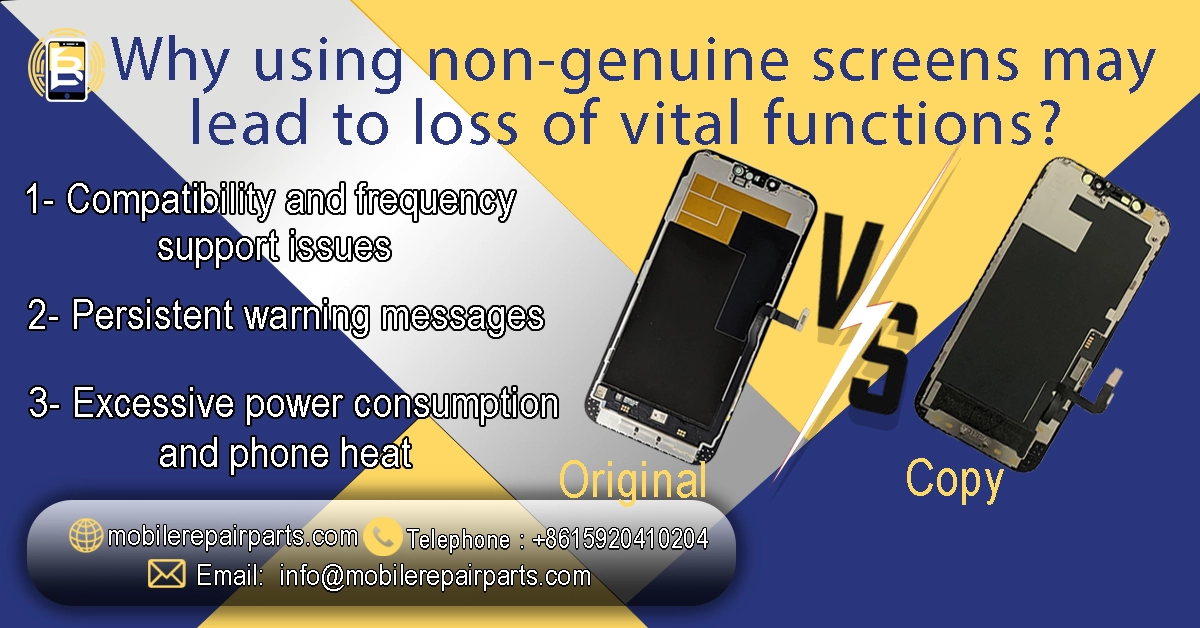
1- Compatibility and frequency support issues
The majority of non-original screens do not support ProMotion 120Hz:
- They will only run at 60Hz.
- Choppy or slow scrolling may occur.
- Some displays exhibit issues with touch responsiveness.
- For customers using Pro Max iPhones, these differences are very noticeable and lead to a direct complaint.
2- Persistent warning messages
iOS recognizes non-original screens and shows a warning message:
- In Settings under Parts History.
- Sometimes on the lock screen after a reboot.
- This reduces the customer's trust in the service technician or dealer.
3- Excessive power consumption and phone heat
Low-quality commercial screens may cause:
- 15-25% higher power consumption.
- Excessive heat during gaming or watching video.
What are the issues with low-quality screens?
Some cell phone parts wholesalers or repair shops buy commercial iPhone screens (clones) that are 30-50% cheaper, but they cause a series of issues:
-False claims:
Some commercial monitors claim to support True Tone, but they don't keep the calibration data properly, causing the feature to disappear later.
- Color unevenness:
Even a slight deviation in color quality can make the monitor look blue or washed out, which is immediately noticeable to the customer.
- Touch malfunctions:
A poor quality touchpad leads to false touches or unresponsive areas especially on the edges.
-Excessive power consumption:
Poor-quality screens consume more power, accelerating battery drain and causing endless complaints.
These issues not only harm the user experience, but also your company's reputation.
The worst thing that can happen is to be known as the shop that “sells and installs inferior cell phone screens”.
What is the real cost of saving from fake screens?
A commercial screen saves you as a wholesaler $30-50 but if it fails, you pay:
- Additional technical time.
- New parts.
- Shipping costs.
- Loss of customers and goodwill.
So your initial savings turn into a double loss later.
And the most dangerous: One negative comment on social media or Google can scare away dozens of new customers.
Why Wholesalers Should Ensure Certified Quality?
When you're in the business of selling wholesale cell phone parts and repair parts, you're not just selling parts, you're selling trust and peace of mind.
For this reason, to ensure there are no defects, ask the supplier:
- Randomly test 5-10% of each batch.
- Check the full performance of each screen with a test phone.
- Ensure EEPROM transfer and try Face ID.
Providing quality certificates
-A reliable supplier provides certificates proving that the screen complies with Apple's original standards:
When buying iPhone 13 Pro Max screens replacement from China, make sure the supplier provides you with the following:
- ISO 9001 certification to prove production quality.
- RoHS certification for environmental compliance.
- ProMotion and True Tone support test reports for each batch.
Clear categorization and warranty policies
Buy only from suppliers:
- They clearly categorize cell phone parts: Used Original Screen, Refurbished OEM Screen, Commercial Screen.
- They offer a reliable warranty that ensures product quality and customer support.
- Explain the conditions for returning defective parts.
We at BETA Electronic Co LTD provide the best wholesale cell phone parts from China to Latin America at competitive prices. All of our products are of high quality, with clear categorization of each spare part to facilitate your accurate selection. We also offer reliable warranty policies that give you peace of mind and the trust of your customers. Contact us and order now and benefit from a customized quote that suits your business needs, fast shipping, and dedicated support services for Latin American wholesalers.
How to protect your business and gain customer satisfaction?

Cell phone parts wholesalers who are successful in the maintenance business are those who combine:
- Train your technicians
Make sure your team is trained to:
- Accurately disassemble and install the iPhone 13 Pro Max screen.
- Safely relocate Face ID modules.
- Using programming tools to activate True Tone.
- Dealing with reliable suppliers
Always order:
- Quality test reports.
- Performance guarantees.
- iPhone 13 Pro Max screen compatibility with phone programming and internal functionality.
- Educate customers
when handing over the phone:
- Explain what's changed.
- What features work and what doesn't.
- Clearly state the warranty.
- Professionalism earns trust, even when there are some limitations.
Top 3 tips to educate customers when handing over a serviced iPhone 13 Pro Max

First tip: Explain the limitations of Face ID
Even if the iPhone 13 Pro Max screen replacement is installed accurately:
- You may experience Face ID failures.
- Be sure to let the customer know to check Face ID before leaving.
- Explain that any subsequent breakage or attempted unlocking may void the warranty.
Second Tip: Demonstrate True Tone status
if you use a high-quality iPhone 13 Pro Max display replacement:
- Activate True Tone and show the customer that it works.
If the iPhone 13 Pro Max replacement screen is commercially:
- Explain in advance that True Tone will not work.
Document this in writing to avoid misunderstandings.
Third tip: Recommend additional protection
I always advise the customer to:
- Install a high-quality protective adhesive.
- Use an authorized charger to avoid screen issues.
Prepare for the future
Apple is moving more and more towards hardware to software.
If you're not prepared with tools, suppliers, and training, you'll find yourself out of the cell phone parts business.
Investing in quality and professionalism today is the only guarantee of success tomorrow.
In short, iPhone 13 Pro Max screen replacement isn't just about replacing a damaged screen with a new one; it's a true test of your professionalism and commitment to quality.
Understanding the intricacies associated with this process is critical to ensuring successful repairs. From integrating advanced components like the OLED display, Digitizer, and Face ID, to adhering to Appl's strict quality standards, every detail matters.
For wholesalers and technicians, recognizing these intricacies is essential. Not only does it help provide better service, it also gives customers the peace of mind of knowing their phones are in expert hands. To be a successful wholesaler or repair shop owner in Latin America, staying on top of the details of iPhone 13 Pro Max repairs will better equip you for the challenges ahead.
Looking for the best repair options? Reach out to us on WhatsApp today and get the best offers for iPhone 13 Pro Max replacement screens.


